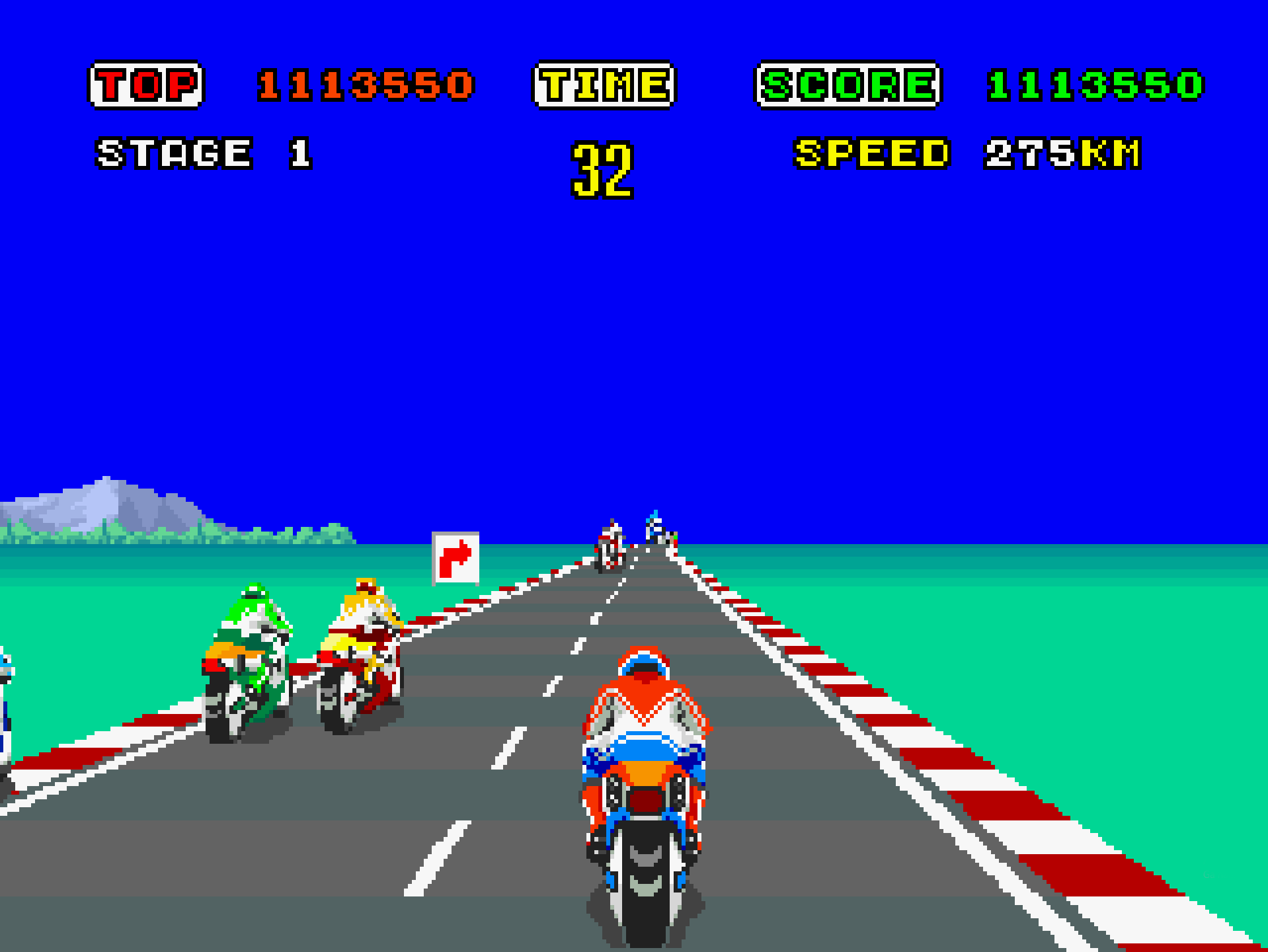Introduction
Released by Sega in 1985, Hang-On was a revolutionary arcade motorcycle racing game that combined high-speed thrills with physical interactivity. Designed by the legendary Yu Suzuki, it was one of the first arcade games to feature a full-sized motorcycle cabinet that players could straddle and lean into turns. Hang-On wasn’t just a racing game—it was a sensory experience that helped establish Sega's reputation in arcade innovation.

Development and History
- Developer: Sega AM2
- Publisher: Sega
- Release Date: 1985
- Lead Designer: Yu Suzuki
Hang-On was created as part of Sega's "taikan" or "body sensation" project—a series of arcade titles meant to physically immerse players. Yu Suzuki led the charge, inspired by the realism of motorcycle racing and the potential for merging arcade gameplay with real-world motion.
The game's cabinet was groundbreaking, featuring a motorcycle frame that players could physically tilt to steer. This innovation would become a Sega hallmark and directly influence future titles like Out Run and After Burner.

Gameplay Video
Gameplay and Mechanics
Core Gameplay
- Players race against the clock, speeding through checkpoints to extend playtime.
- The objective is to complete each course section before time runs out.
- Players control a superbike, weaving through traffic and tight turns.
Controls and Cabinet Design
- The deluxe arcade version featured a full-size bike that leaned left and right for steering.
- Acceleration was controlled via a throttle grip, just like a real motorcycle.
- Braking was minimal; emphasis was on cornering and maintaining momentum.
Difficulty and Progression
- Time was tight, encouraging players to improve with each attempt.
- Later stages introduced sharper curves and denser traffic patterns.

Cultural Impact and Legacy
- Pioneer of Motion Cabinets: Hang-On helped popularize immersive arcade cabinets.
- Arcade Phenomenon: It became a top-grossing arcade game in Japan and North America in 1985.
- Influenced Future Titles: The success of Hang-On paved the way for Sega's "Super Scaler" era.
- Sequels and Ports: Super Hang-On followed in 1987 with improved graphics and courses. The original was later ported to Sega Master System and various compilations.

Fun Facts
- Super Scaler Technology: Hang-On used Sega's new sprite-scaling tech to create a pseudo-3D effect.
- Realistic Lean: Suzuki studied professional motorcyclists to mimic real leaning dynamics.
- Cabinet Options: The game was available in both a deluxe bike version and a more compact upright model.
- Yu Suzuki's First Major Hit: This was Suzuki's breakout title before going on to create Virtua Fighter and Shenmue.

Conclusion
Hang-On did more than entertain—it moved players, literally and figuratively. Its combination of visceral cabinet design, technical innovation, and tight racing mechanics made it a touchstone in arcade history. Decades later, it remains a thrilling example of how Sega brought the arcade to life with speed, sound, and motion.

